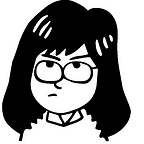What’s the Real Story of the Gay Middle East?
Against a backdrop of ancient deserts and the ultimate clash of civilizations, the image of the secret life of oppressed gays and lesbians plays into every one of our favorite stereotypes, both about the LGBT community in general and about the Middle East.
The Middle East is already seen as “too complicated” to understand, and if you believe Western media, it’s easy to assume that the LGBT community in the Middle East looks a lot like it does in the US—just more oppressed. But to get to the true story—or stories—more accurately, you can’t indulge those stereotypes.
Let me try to paint a more realistic picture. On the one hand, it’s true that the queer community in the Middle East faces rampant homophobia, and has not been granted the same “freedoms” associated with Western ideals of homosexual progress such as gay marriage, open displays of romantic affection and other superficial indications of acceptance in society. But circumstances vary greatly according to country, gender, location and of course from individual to individual.
And while it’s also true that the LGBT community lacks protection from state and private persecution, facing violence is not unique to the LGBT community. In the Middle East, activists, dissidents and sometimes ordinary civilians are subject to violence through occupation, dictatorship and political suppression and censorship, often with Western support and even participation. For the average gay Arab, the personal and the political intersect daily, and queer rights cannot be separated from human rights issues that affect everyone in the Middle East.
Meanwhile, if you listen to the types of stories that dominate Western media, you’d think that the biggest issues facing LGBT people in the Middle East are based purely on their identity as queer. Many people in the West have ideas about how queer people in the region should come out or live their lives. Some non-Middle Eastern LGBT activists are so eager to “save” queers in the Middle East that they’ll speak over Middle Eastern queers themselves.
Here’s the problem: when queers and other vulnerable communities are painted as simply needing to be saved, the logical conclusion is that the West should come in and do the saving. Many of the narratives around LGBTQ issues in the region implicitly or explicitly support Western imperialism and foreign occupation, or only talk about queer issues by painting the rest of the Middle East as backwards or stuck in time. This often creates more harmful prejudice, rather than helping to alleviate the problem.
The LGBT community in the Middle East is not a singular entity, but a living organism made up of a vast array of individuals whose stories and experiences are being played out in a complex social and political environment. To address the needs of these individuals, my organization Majal — a digital platform that amplifies under-represented voices—launched Ahwaa.org in 2011, at the beginning of the Arab Spring.
Ahwaa is a bilingual forum for LGBTQ youth in the Middle East that facilitates authentic, high-quality interactions. In this safe space, Ahwaa users get to define their own lives, whatever that might look like. The site currently has more than 5,900 registered members who dialogue in almost 2,000 forums. Some topics are universal: How do you get over an ex-partner? Has anyone tried an open relationship? Other topics are unique to the region. How did the Egyptian revolution affect the LGBT community? Many want to address religion and sexuality, or vent about coming out to siblings—or just vent in general.
While people around the world might be able to relate to many of the issues discussed, Ahwaa is a place to have a conversation that’s at once widely relatable and utterly Middle Eastern.
Like many of our projects at Majal, Ahwaa has faced many security challenges. We’ve had to take extra precautions with security and privacy because of how sensitive it is to talk about LGBTQ issues in the region. But we’re just as concerned with security when it comes to our social movement-tracking project at CrowdVoice, or with Migrant Rights, which speaks out against deplorable conditions for migrant workers in the Gulf. Ahwaa attracts negative attention not just because it deals with controversial issues, but because it empowers its users — and empowering people is a threat to oppressive regimes all over the world.
When Ahwaa emerged in the wake of protests and uprisings across the Middle East, LGBT people and their allies saw a glimmer of hope for meaningful social change that would accompany deep political reform. Today, the protests have given way to more repression and violent conflict, but the hope for change is constant.
Rainbow flags can’t begin to tell true stories even in the United States, much less in the Middle East. When LGBT people in the Middle East have access to platforms that let them tell their own stories, the real stories emerge. And these stories, incidentally, go back centuries: in ancient odes to same-sex love that persisted after Islam, a rich and dynamic narrative that weaves through colonialism and dictatorship, violence and extremism, and embraces creativity and poetry, love and family. From then to now, the agency and voice of the storyteller continue to make all the stories of LGBT people in the Middle East worth listening to.
A version of this piece was originally published on World Economic Forum blog.
The TED Fellows program hand-picks young innovators from around the world to raise international awareness of their work and maximize their impact.
